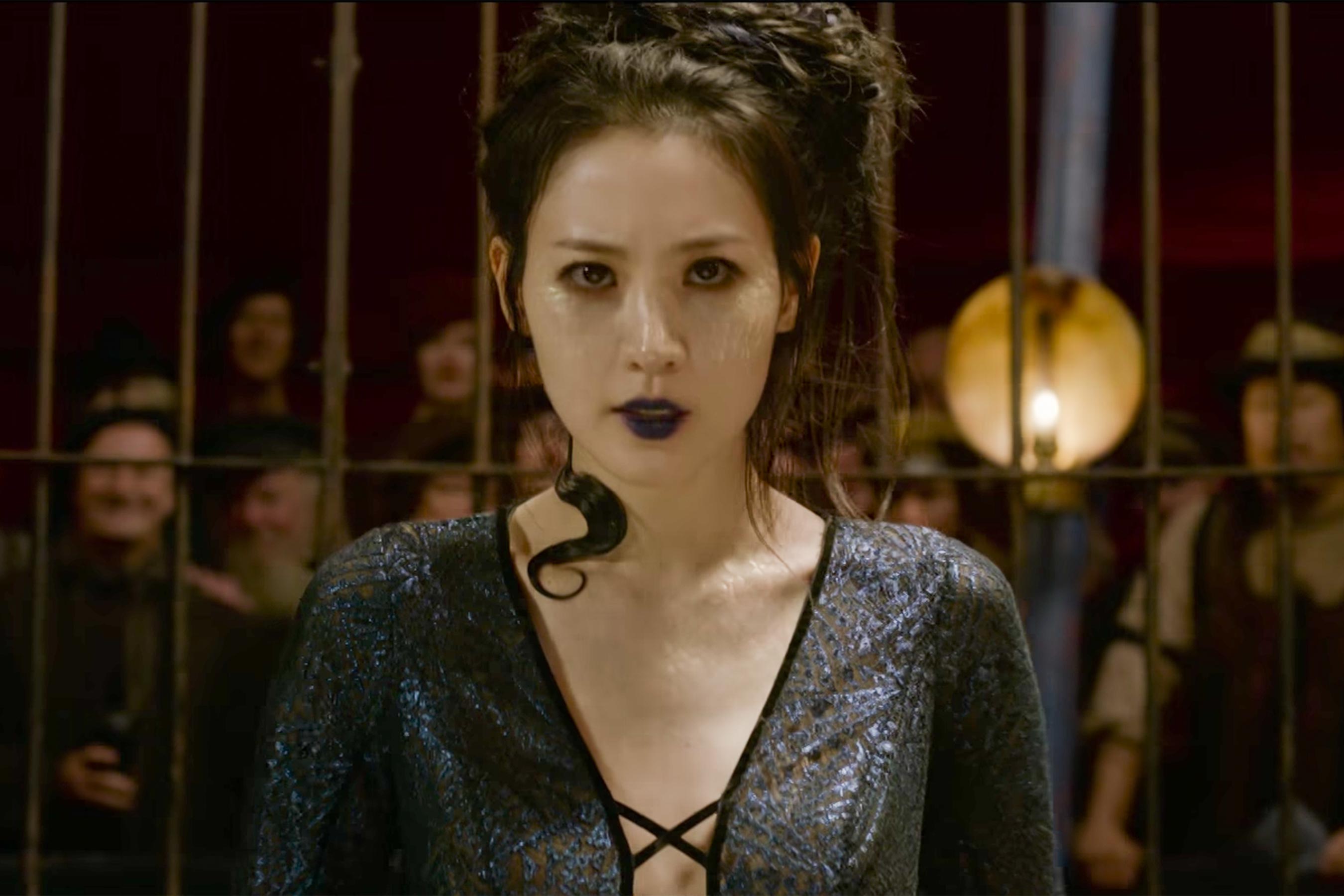With the upcoming release of “Fantastic Beasts: The Crimes of Grindelwald” approaching in November, J.K. Rowling received criticism from her fans in late September for having a Korean woman play the character of a cursed snake, Nagini. For many fans, Rowling’s decision to cast an Asian woman to play a snake is reminiscent of the racist tropes that plagued early Hollywood.
In the original Harry Potter book series, Rowling portrayed Nagini as a large snake and malicious sidekick of the book series’ primary antagonist, Lord Voldemort. Ever since the explosion of “Harry Potter” into the pop culture scene in the 2000s, fan speculations regarding Nagini’s history have been a conversation and debate starter. Some fans wondered whether Nagini was the snake that Harry Potter spoke to and helped escape from a zoo exhibit in the first installment of the series, “The Philosopher’s Stone.” Naturally, Rowling’s grand reveal of Nagini being a “maledictus,” a human being cursed to be an animal, shocked and awed fans around the globe.
Nonetheless, fans quickly spoke out about the awkwardness surrounding Rowling’s choice for an East-Asian woman, Claudia Kim, to be cast as a character that is eventually cursed to become an evil, murderous snake. In the past several years, Rowling had been criticized for her casting of Johnny Depp following allegations of domestic abuse and her regard of Native-American religious beliefs as being mere fantasy in her writing. In fact, Rowling’s recent choice to cast Nagini as an East-Asian woman is questionable for two major reasons, both of which have racist undertones.
Hollywood’s Dragon Lady
On top of East-Asian women hardly ever being cast in films and television shows, the historical stereotypes that Hollywood imposed on them are not great, to say the least. One common trope that Rowling has brought back to America’s memory is that of the “Dragon Lady.”
In American films and television, the Dragon Lady appears mysterious and untrustworthy, but also aggressive and conniving. Filmmakers portray her as an antagonist with the willpower to pose a threat to usually white, Western protagonists, but not enough to make her the primary villain of the story and source of fear for viewers. With these undesirable characteristics, the trope’s purpose is to demonize Asian women and enforce the idea that our Western minds cannot understand the cultural motivations of the Oriental mind. Not only is this racist, but it also underestimates the so-called Western mind quite a bit.
When thinking and talking about race, we tend to use categories, especially binary ones. Western media like to show East-Asian women as submissive, quiet, and obedient — the kind a heroic protagonist can take advantage of. On the flip side, we have the Dragon Lady. Albeit independent, the Asian woman is now someone Hollywood tells us to never trust, someone who by their very nature seeks to ruin the hero of every narrative. While this may seem like just lazy storycrafting at first, it’s a disservice to Asian women. Despite all women, regardless of race, being unique, complicated human beings with intricate, multifaceted personalities, our media shows East-Asian women as only operating within the Submissive Asian Woman trope and the Dragon Lady trope.
In 2018, Rowling’s newest material shows us that the Dragon Lady trope has endured and still roams in Hollywood. Fans had criticized Rowling in the past for only portraying one East Asian woman in the films in the form of Cho Chang, a Hogwarts student who grieved the death of her deceased boyfriend for the majority of the books and whose screen time was brief. With her new film franchise, Rowling had an opportunity to re-approach her treatment and portrayal of East-Asian women and girls in her books, as well as other characters of color. The feedback from her multitude of fans provided her with enough material to grow as a writer and to listen to her Asian fans.
Nonetheless, her announcement that the bloodthirsty, evil snake in the series all along was a East-Asian woman shows an evident stunt in her literary growth. Whether she intended to have it be so or not, Rowling’s news on Nagini was an embarrassing echo of the Dragon Lady trope that Asian filmgoers and actresses have grown tired of.
“The Jungle Book” Effect
On top of the Dragon Lady trope, Nagini’s casting shows that not even Rowling is immune from falling into another common racial trope. We can call the film trope of people of color playing characters who remain in an animal’s body for most of a story “The Jungle Book” Effect.
Hollywood’s association between animals and people of color can be seen in a classic childhood movie — “The Jungle Book” (1976). Animals are given the same mannerisms, accents, and physical features of black and Asian people, which ultimately blurs the line between animals and people; their characteristics and nature become interchangeable. Like with the Dragon Lady trope, audiences involuntarily absorb these subtle messages. Considering that the U.S. already has a history of calling people of color and immigrants dogs and monkeys, media content that blurs the line between minorities and animals can potentially provoke filmgoers to associate the savagery and slyness of animals with ordinary human beings.
One popular author who slipped into this trope was Stephanie Meyer, whose film adaptation of her series “Twilight” had her Native-American characters appear as wolves on screen. Most fans of Meyer’s franchise were upset that this caused Native-American actors to have significantly less screen-time and attached a savagery associated with animals and wolves to these characters. Still, this trope that Meyers and Rowling both rely on also has dehumanizing connotations and deprive actors and actresses of color from appearing in stories in a human form.
So, is J.K. Rowling saying that East-Asian women are like animals or are always up to no good? Probably not. Still, it’s important to remember that the narratives we create inevitably flows from our culture and history — even the darker moments of our history. These tropes that endured decades of Hollywood storytelling usually are rooted in hateful, dehumanizing attitudes that were once considered the norm.
Even the most popular and successful writers have to examine themselves and their writing for possible cultural biases, for the sake of the real-life human beings that their character represents in these stories. If we want to transcend the hate of the past, one way to do so is to transcend the archaic tropes that remain in our movies and books.
















